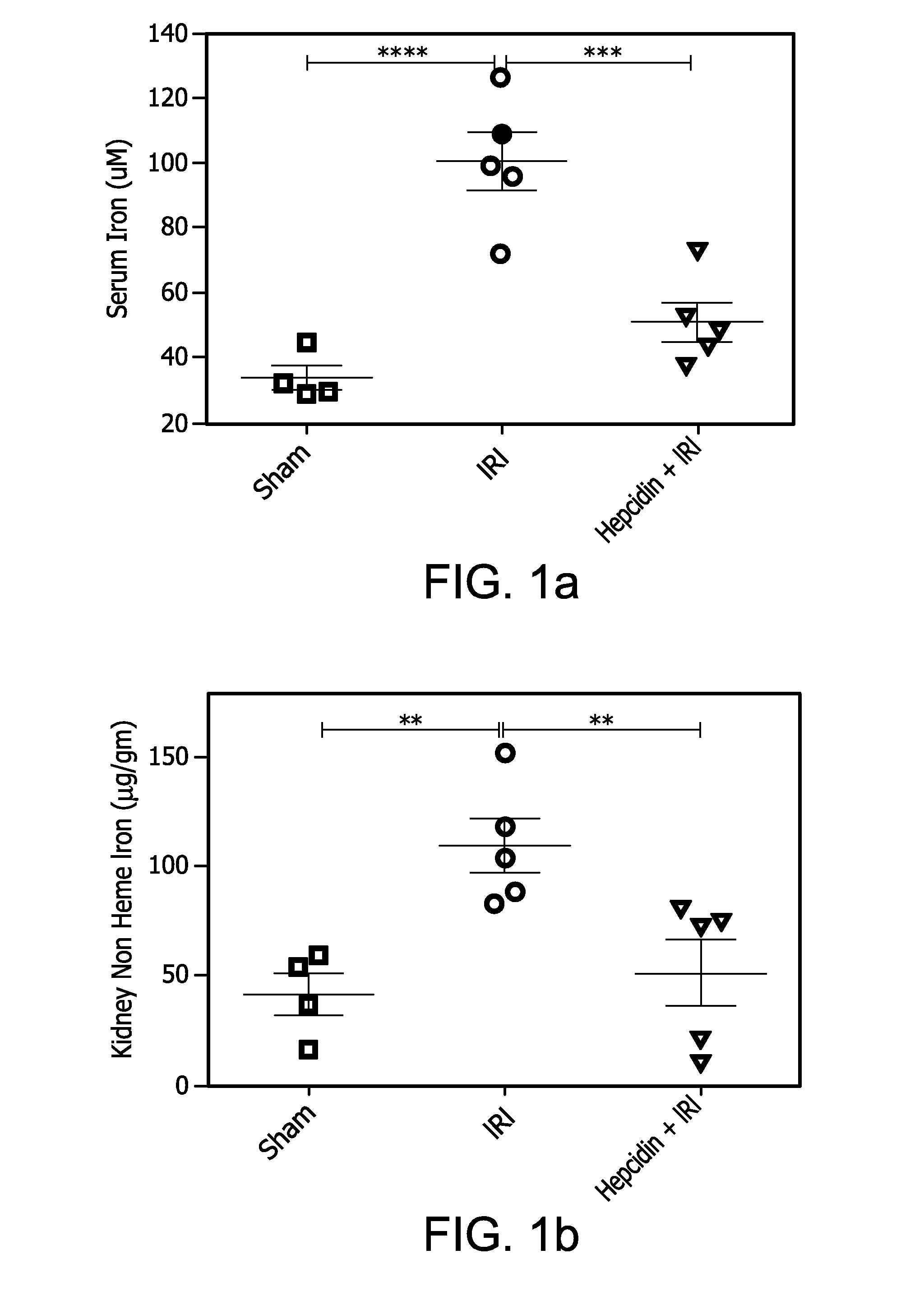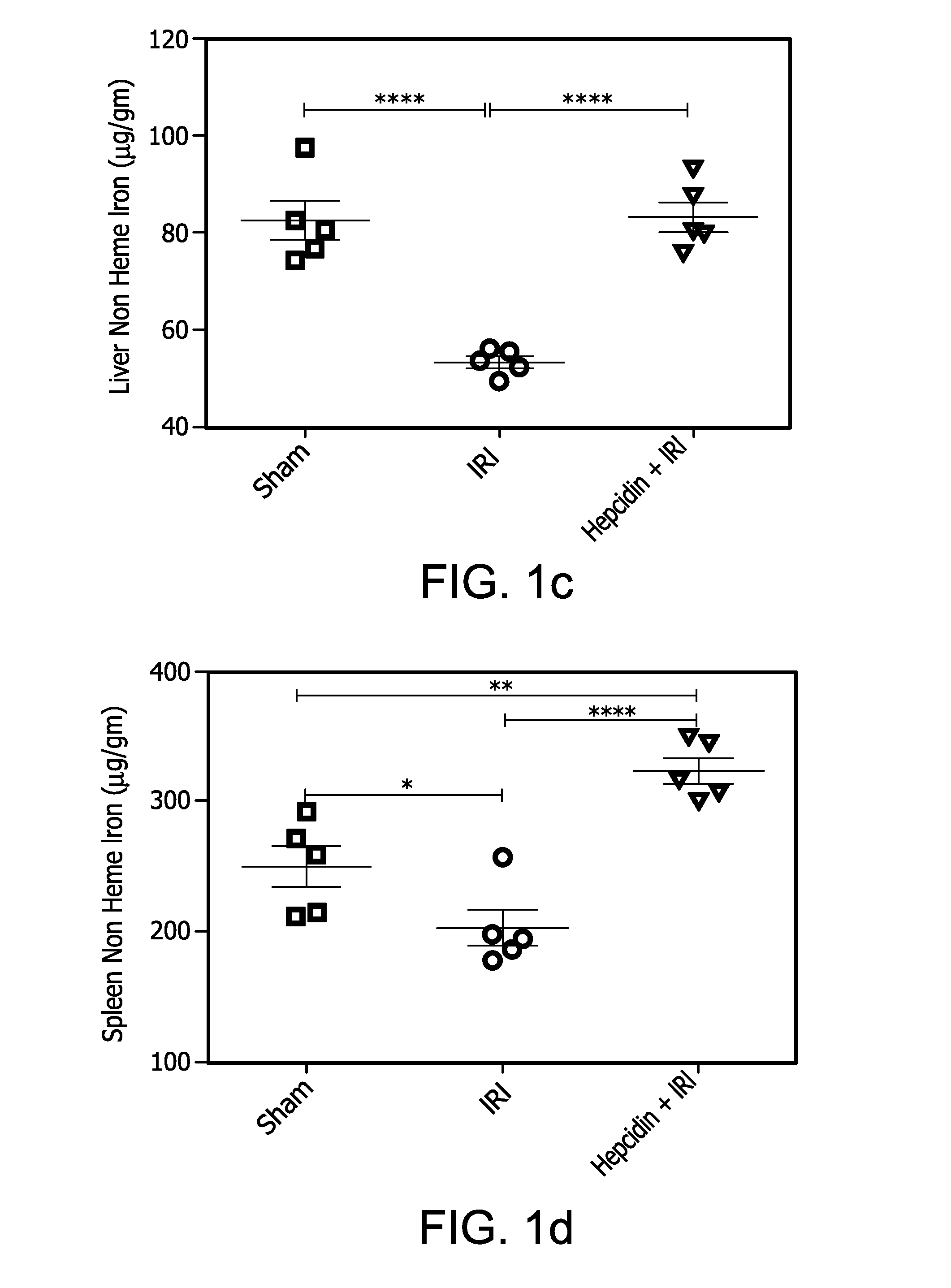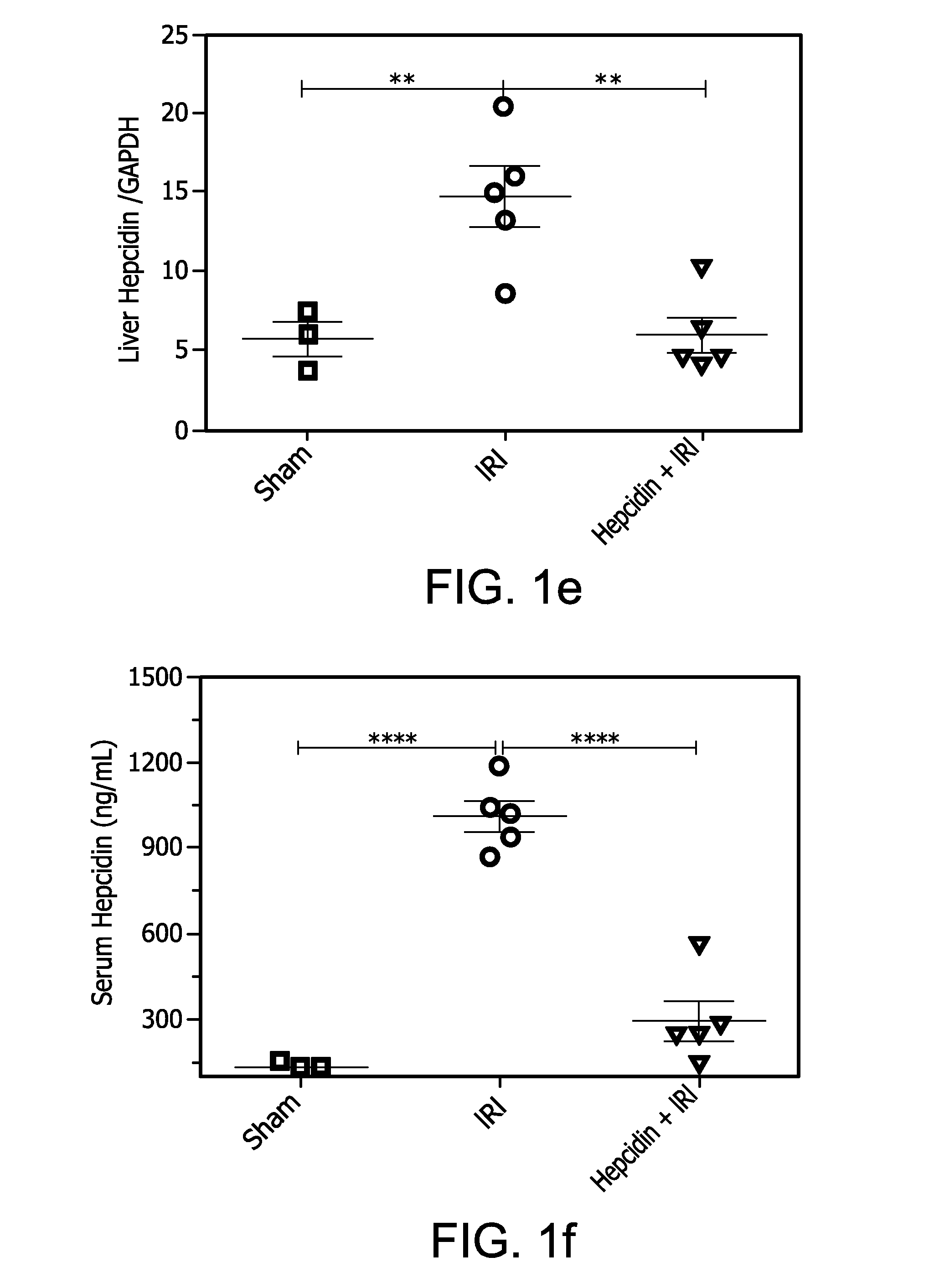Compositions and methods for protecting the kidney from ischemia reperfusion injury
a technology of ischemia and kidney, applied in the field of compositions and methods for protecting the kidney from ischemia reperfusion injury, can solve the problems of partial redistribution of iron from the liver to the spleen, less effective treatment of pre-existing iron overload in mice, and renal iri. , to achieve the effect of reducing circulating iron levels, reducing renal iri, and severe renal injury
- Summary
- Abstract
- Description
- Claims
- Application Information
AI Technical Summary
Benefits of technology
Problems solved by technology
Method used
Image
Examples
embodiments
[0253]In one embodiment, a hepcidin can be used for treatment of inflammatory conditions. In one aspect, it is useful for preventing or treating renal ischemia reperfusion injury. In one aspect, it is useful for preventing or treating acute kidney injury.
[0254]One of ordinary skill in the art will appreciate that the sequences of the components of the hepcidin protein can be modified independently of one another with conservative amino acid changes, including, insertions, deletions, and substitutions, and that the valency could be altered as well, as long as the resulting multimer / multimeric complex remains effective. Amino acid changes (fragments and homologs) can be made independently in each hepcidin as well when they are being used in combination therapy.
[0255]In one aspect, a protein or peptide of the invention, or a combination thereof, can be administered by a route selected from, including, but not limited to, intravenously, intrathecally, locally, intramuscularly, topically...
examples
Methods
Mice and Surgical Protocol
[0334]All experiments were performed in accordance with the National Institutes of Health and Institutional Animal Care and Use Guidelines. The Animal Care and Use Committee of the University of Virginia approved all procedures and protocols. C57BL / 6 mice from the Jackson Laboratory and hepcidin knockout mice (HAMP− / −), a kind gift from Dr Cindy Roy (John Hopkins University) were used in this study. All experiments were performed on 8-10 weeks old male mice. Kidney ischemia-reperfusion surgery was performed as previously reported (44). The core temperature of the mice was maintained between 34° C. and 36° C. using a heating pad. After anesthetizing the mice (ketamine, 12 mg / ml; atropine, 0.48 mg / ml; xylazine, 24 mg / ml; 200 ml mixture administered per 20 g body weight), bilateral flank incisions were made, both renal pedicles were exposed, and cross-clamped for 26 minutes (severe I / R injury) or 24 minutes (mild I / R injury). After the determined ischem...
PUM
| Property | Measurement | Unit |
|---|---|---|
| time | aaaaa | aaaaa |
| time | aaaaa | aaaaa |
| time | aaaaa | aaaaa |
Abstract
Description
Claims
Application Information
 Login to View More
Login to View More - R&D
- Intellectual Property
- Life Sciences
- Materials
- Tech Scout
- Unparalleled Data Quality
- Higher Quality Content
- 60% Fewer Hallucinations
Browse by: Latest US Patents, China's latest patents, Technical Efficacy Thesaurus, Application Domain, Technology Topic, Popular Technical Reports.
© 2025 PatSnap. All rights reserved.Legal|Privacy policy|Modern Slavery Act Transparency Statement|Sitemap|About US| Contact US: help@patsnap.com



